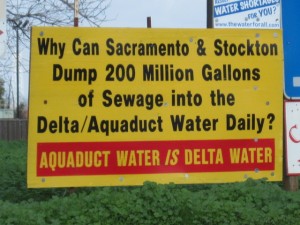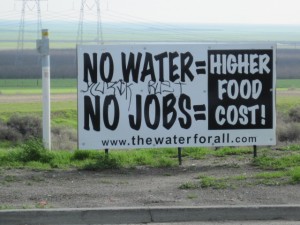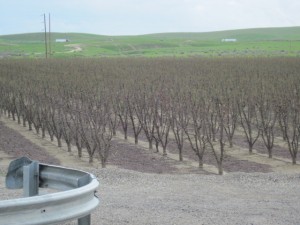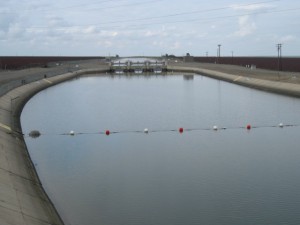For the next three weeks, the Sweetwater Project will focus its attention on one of the most important aspects of California’s water system: the Delta. We hear about it a lot in the news, and mentioned in passing, but what is it and why is it so important?
 To talk about the Delta with people who depend about it, is to poke an open wound. Not only is it one of the most environmentally sensitive places in the state, it is also one of the most politically sensitive. Farmers, environmentalists, and urban interests all have a different idea of what the Delta should look like and how it should be used. But to pull back for a moment, what is it and why is it important?
To talk about the Delta with people who depend about it, is to poke an open wound. Not only is it one of the most environmentally sensitive places in the state, it is also one of the most politically sensitive. Farmers, environmentalists, and urban interests all have a different idea of what the Delta should look like and how it should be used. But to pull back for a moment, what is it and why is it important?
If the Sacramento River is the aorta of California’s water circulation system, the Delta is its heart. A delta is landform created at the place where the mouth of a river meets the ocean. As the river or rivers meets the ocean, they deposit all the sediment they have been carrying, creating a vast network of waterways and marshes. The Delta’s marshes and waterways act like capillaries that connect freshwater rivers and their nutrients to the vast open ocean.
In California, our Delta, the Sacramento-San Joaquin River Delta is a mega
estuary- the largest on the West Coast- with 700 miles of channels that converge around Sacramento and stretch all the way to the San Francisco Bay and the Pacific Ocean.
The rivers that historically poured down the mountains, fed into the Sacramento and San Joaquin Rivers and into the Delta are many. The Feather River, from which Los Angeles and San Diego get much of their water. The Tuolumne River, San Francisco’s lifeline. The Mokelumne River, which provides drinking water for the East Bay. And other popular rivers, the American, the Yuba, the lovely McCloud, and the wild Cosumnes.
All of these rivers carry nutrients and wild creatures into the Delta. There, sediment is deposited, and baby salmon and steelhead, among others, find shelter in the Delta’s marshes before they make their trips into the ocean. In fact, salt marshes are the “nurseries for the majority of oceanic fishes and shellfish.” They are one of the most productive places on earth- because of the nutrients found there: they are ten times more productive than the open ocean. Marshes also act as an incredible natural filter for water.
Environmentally, this is why the Delta is such an important place. A delicate
balance between salt and fresh water, providing nutrients for all levels of the food chain, the Delta is key to the health of our watery ecosystems and fisheries.
Of course, us humans have changed that balance. We use the Delta as the river hub it is, as a transfer station between Northern rivers and aqueducts that conduct water to Southern California and farmland in the Central Valley. Two thirds of Californians get at least some of their water from the Delta. Much of the agriculture in the Central Valley is grown with Delta water.
 All of this human demand has taken its toll on the Delta. Around half the water that used to make it to the Delta makes it there today. Of what does make it, billions of gallons of water a year are pumped out of the Delta and into aqueducts. This has put the Delta’s fragile ecosystem on the brink of collapse.
All of this human demand has taken its toll on the Delta. Around half the water that used to make it to the Delta makes it there today. Of what does make it, billions of gallons of water a year are pumped out of the Delta and into aqueducts. This has put the Delta’s fragile ecosystem on the brink of collapse.
And it has made it hard for the different users of Delta water to agree on how to fix this problem. One of the biggest examples is a federal court case in 2007 where the judge ordered pumps in the Southern Delta to be shut down because of a tiny endangered fish called the Delta smelt. The ruling forced farmers in the Central Valley to take land they could not water out of production. Signs up and down Highway 5 still proclaim the farmer’s anger.
The Delta, then, represents the tenuousness of California’s relationship with water. It is an opportunity for California to find a balance between human use, agricultural and urban, and the health of the environment.
More to come next week.




Seems it will take “balanced” thinking to correct the problems we civilized creatures have created in our water systems.